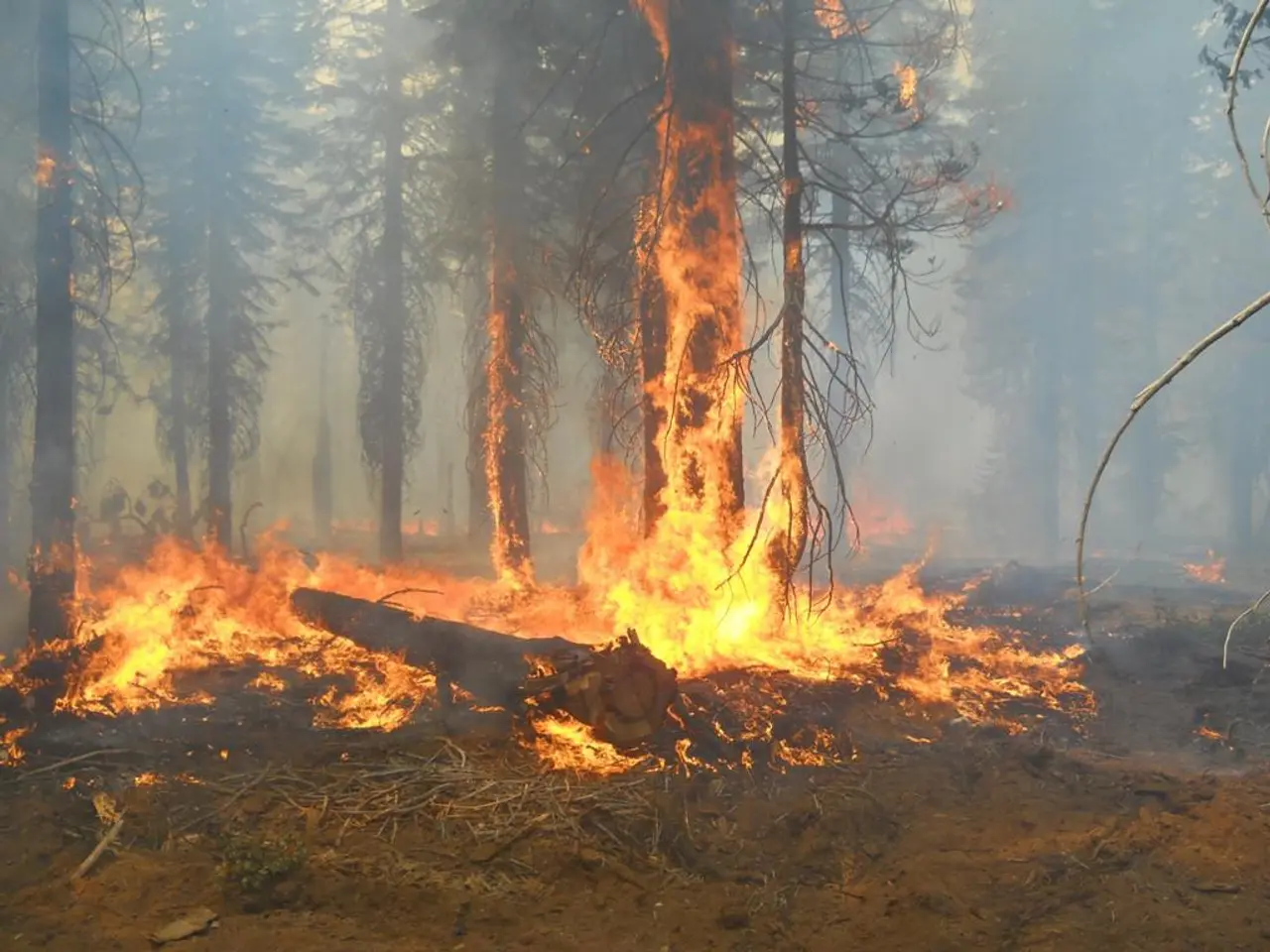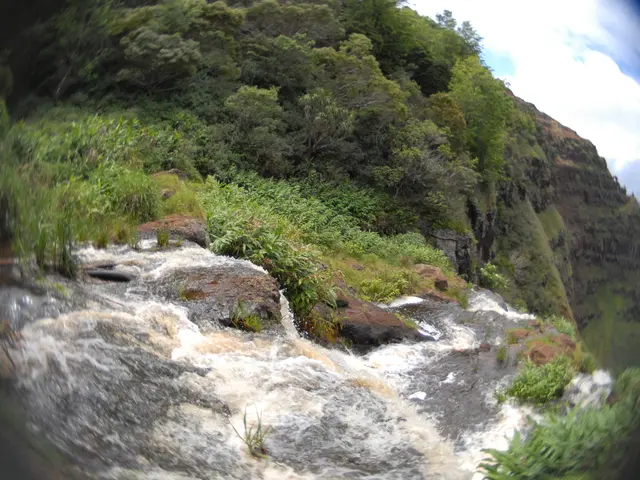Foresters and woodland managers issue alerts about elevated wildfire risk
High Fire Danger Persists in State Forests
A prolonged period of high fire danger has prompted state forest officials to issue a call for increased vigilance and precautions in high-risk areas. Despite recent rainfall, the forest floor remains covered with flammable brush and debris, making it easy for fires to ignite and spread rapidly.
The withered plants in the forest increase the risk of fires due to their dry nature. To prevent accidental fires, campfires have been prohibited in the forest, and open flames, such as cigarettes, should be avoided. Similarly, grilling and fires near the forest edge are discouraged.
Unattended vehicles can potentially spark a fire, so they should be parked away from dry vegetation. The public is advised to be extra cautious when working in agricultural harvesting operations near the forest edge, particularly on slopes or in agricultural harvesting operations, where the risk of fires is even higher.
Forest fuel reduction is a key prevention strategy. This involves mechanical thinning of dense vegetation and removal of excess brush to reduce fire intensity risk. Pile burning of leftover small branches is often carried out once dried to minimize smoke and allow safer future prescribed burns when conditions are appropriate.
Community wildfire protection planning (CWPP) is another important measure. This collaborative approach involves local governments, fire districts, and residents working together to assess wildfire risk, recommend risk mitigation actions, and guide preparedness efforts.
Public education and readiness programs are also crucial. Residents are urged to avoid spark- or flame-causing activities during high fire danger times, create emergency plans, and maintain emergency supplies readily accessible. Local authorities often issue disaster declarations and mobilize firefighting and emergency resources proactively when conditions escalate.
State and local deployment of firefighting resources, including trained firefighters, specialized equipment, and support from National Guard helicopters equipped for firefighting missions, is activated based on elevated wildfire danger levels.
Long-term climate mitigation and forest protection policies are aimed at reducing greenhouse gas emissions and preserving forest health to mitigate extreme fire weather conditions. These policies include carbon pricing, renewable energy incentives, and urban forestry initiatives that improve fire resilience at the community level.
Together, these measures address immediate wildfire risks posed by dried vegetation and recent weather patterns, while also building longer-term resilience through ecosystem management, community engagement, and climate action. The state's forest officials urge all residents to do their part in preventing forest fires during this high-risk period.
Economic and social policy should incorporate long-term climate mitigation measures to reduce greenhouse gas emissions and preserve forest health, thus mitigating extreme fire weather conditions related to climate-change. Environmental-science research, including weather analysis, can help forecast high fire danger periods and guide the implementation of science-based firefighting strategies.








